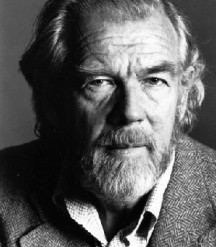Sven Nykvist (Sven Nykvist)

Sven Nykvist was born in Moheda, Kronobergs län, Sweden. His parents were Lutheran missionaries who spent most of their lives in the Belgian Congo, so Nykvist was raised by relatives in Sweden and saw his parents rarely. His father was a keen amateur photographer of African wildlife, whose activities may have sparked Nykvist’s interest in the visual arts. A talented athlete in his youth, Nykvist’s first cinematic effort was to film himself taking a high jump, to improve his jumping technique. After a year at the Municipal School for Photographers in Stockholm, he entered the Swedish film industry at the age of 19. In 1941, he became an assistant cameraman at Sandrews studio, working on The Poor Millionaire. He moved to Italy in 1943 to work at Cinecittà Studios, returning to Sweden two years later. In 1945, aged 23, he became a fully-fledged cinematographer, with his first solo credit on The Children from Frostmo Mountain. He worked on many small Swedish films for the next few years, and spent some time with his parents in Africa filming wildlife, footage which was later released as a documentary entitled In the Footsteps of the Witch Doctor (also known as Under the Southern Cross). Back in Sweden, he began to work with the legendary director Ingmar Bergman in 1953 on Sawdust and Tinsel (released in the US as The Naked Night). He was one of three cinematographers to work on that film, the others being Gunnar Fischer and Hilding Bladh.
Sven Nykvist would eventually become Bergman’s full-time cinematographer and push the director’s work in a new direction, away from the theatrical look of his earlier films. He worked as sole cameraman on Bergman’s Oscar-winning films The Virgin Spring in 1959 and Through a Glass Darkly in 1960. He revolutionised the way faces are shot in close-up with Bergman’s psychologically intense Persona in 1966. After working with other Swedish directors, including Alf Sjöberg on The Judge (1960) and Mai Zetterling on Loving Couples (1964), he then worked in the United States and elsewhere, on: Richard Fleischer’s The Last Run (1971); Louis Malle’s Black Moon (1975) and Pretty Baby (1978); Roman Polanski’s The Tenant (1976); Jan Troell’s Hurricane (1979); Bob Rafelson’s version of The Postman Always Rings Twice (1981); Agnes of God (1985); Woody Allen’s Another Woman (1988) and Crimes and Misdemeanors (1989); Richard Attenborough’s Chaplin (1992); Nora Ephron’s Sleepless in Seattle (1993); and Lasse Hallström’s What’s Eating Gilbert Grape (1993). Sven Nykvist won the Academy Award for Best Cinematography for two of his films, Cries and Whispers (1973), and Fanny and Alexander (1982), both of which were Bergman films. At the 9th Guldbagge Awards in 1973 he won the Special Achievement award for his work on Cries and Whispers. He was also nominated for a Cinematography Oscar for The Unbearable Lightness of Being (1988), and in the category of Best Foreign Language Film for The Ox (1991), in which he directed Max von Sydow and Liv Ullmann.
Sven Nykvist won a special prize at the Cannes Film Festival for his work on The Sacrifice (1986), the last film of the Russian director Andrei Tarkovsky. He was the first European cinematographer to join the American Society of Cinematographers, and received a Lifetime Achievement Award from the ASC in 1996. He wrote three books, including Curtain Call in 1999. His ex-wife, Ulrika, died in 1982. Nykvist’s career was brought to a sudden end in 1998 when he was diagnosed with aphasia, and he died in 2006, aged 83. He is survived by his son, Carl-Gustaf Nykvist, who directed his first film, Woman on the Roof, in 1989 and directed a documentary about his father, Light Keeps Me Company, 1999.
Born
- December, 03, 1922
- Sweden
- Moheda, Kronobergs län
Died
- September, 20, 2006
- Stockholm, Sweden



